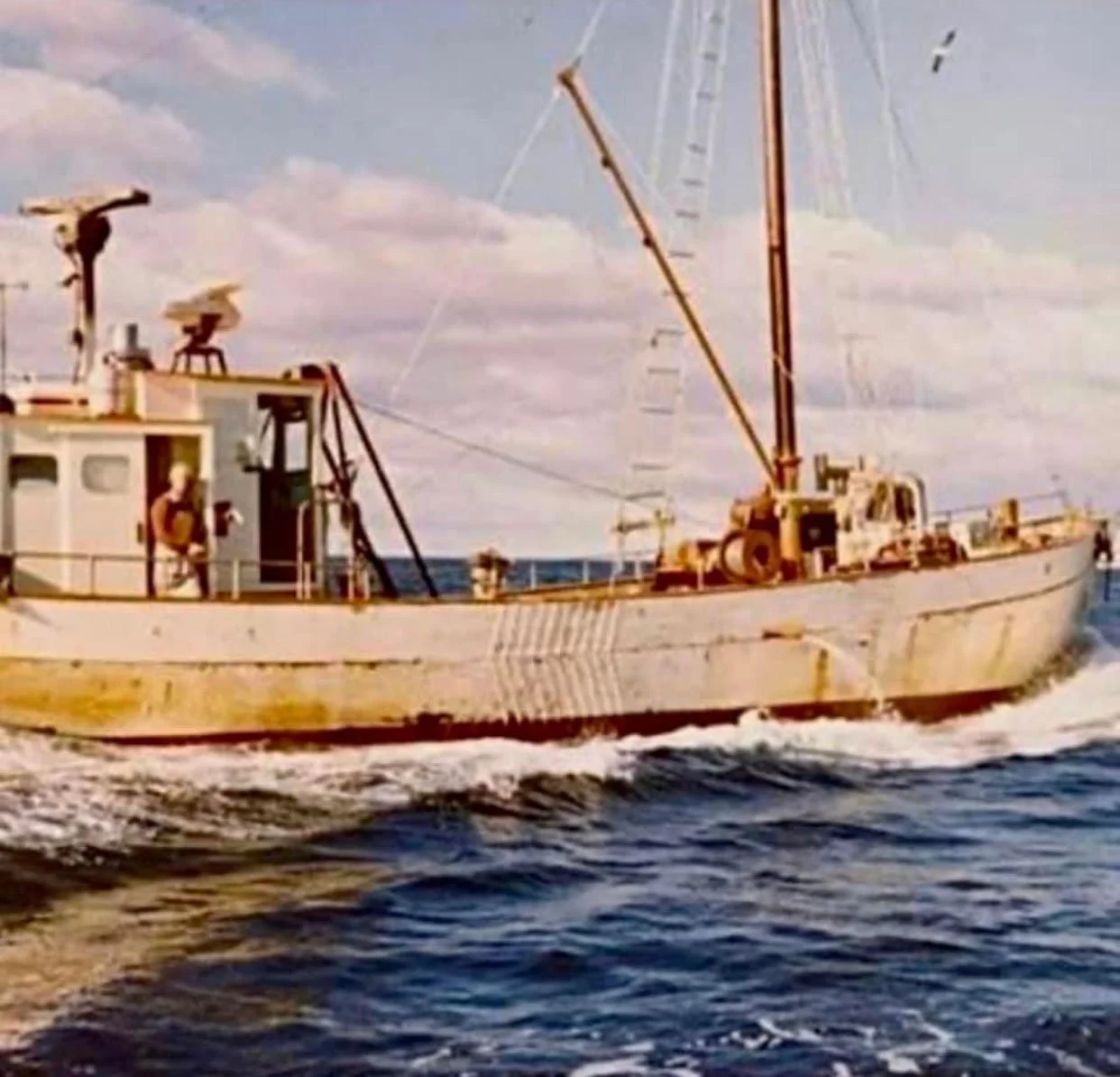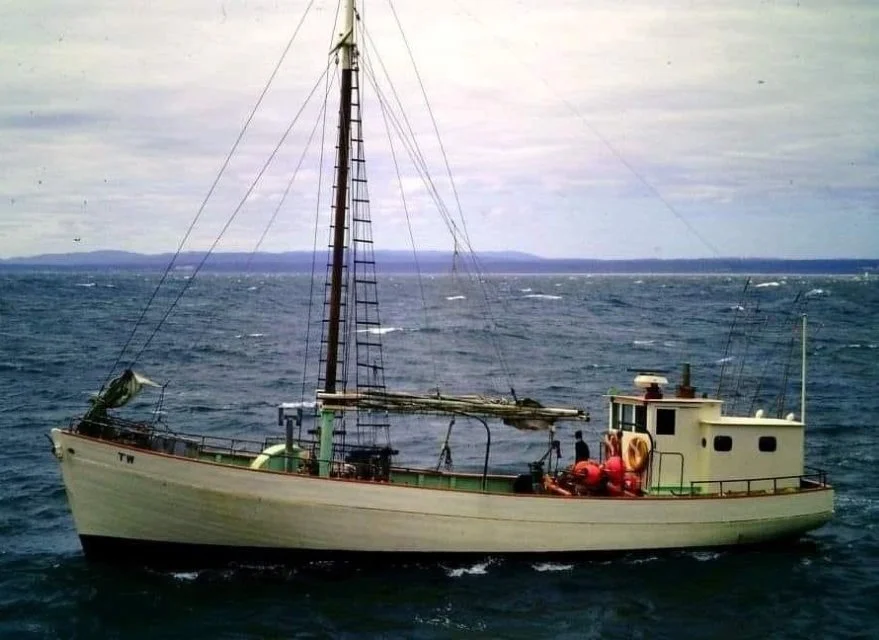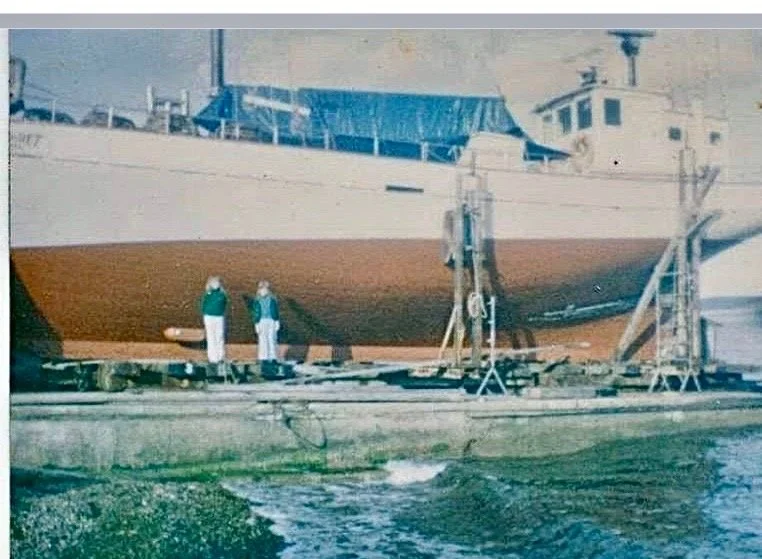I Didn’t know it meant That Much
By James Woods
MARGARET PEARL rigged for scallop fishing (perhaps late 1980s). Note the tractor forward of the mast. Photo from Troy Rainbird.
Over the next few weeks, readers of SWS will be seeing plenty of images and hearing stories of the Australian Wooden Boat Festival just ended.
There will be plenty of congratulatory messages coming both to and from the Festival organisers. I can't do more than say well done to all involved. From the perspective of the crew of MARGARET PEARL, it was the most enjoyable Festival we have attended.
Readers may be aware that MARGARET PEARL is a 17 m cray fishing vessel designed and built in Tasmania which was restored between 2015 and 2020 into a working passenger carrying vessel and adventure cruiser.
Having spent a large amount of time, effort and money in the restoration, the voyage from Melbourne to Hobart for the AWBF was the first time fo more than about 25 years where MARGARET PEARL had returned to Hobart where she was built. The Festival organisers placed her in a conspicuous position which drew large numbers of interested visitors - many of whom had intimate connections with the vessel.
Kettering 1979
Those connections go back to the time before she was launched at the end of 1958. The granddaughter of Richard Thompson, the designer came on board and was shown around by Greg Phelan who was the project manager during the important final stages of the restoration project.
Greg also hosted the sister of Jack Behrens who built the boat. Still spry and with a twinkle in her eye, she told of doing some of the caulking immediately before her first launch.
At Sea in the 1960’s
Many of the family members of Cyril "Dodger" Long, the Stanley fishermen who commissioned and worked her for about 20 years or more came on board with stories of "Dodger" as he was universally known. He was described as a true gentleman with a reserved disposition who had survived action as a tail gunner aboard a Lancaster bomber in World War II. Those of you unfamiliar with the Lancaster bomber should do some research on the exposed position of the tail gunner in the aircraft. It might explain why the rigours of commercial fishing in Bass Strait were no obstacle. A number of Stanley residents also painted a picture of life in a fishing village in the 1960s and 70s.
One of the Rainbird family who had her in the late 1980s told of driving a tractor onto the foredeck when she was converted for scallop fishing. Apparently this was a standard method of providing machinery for hauling the dredge in and out.
MARGARET PEARL was treated as the work horse she was built to be and it is little wonder she survived at all.
Shipwrights and crew members attested to the near misses and occasional big hits that she endured as a fishing vessel.
On the slip in the 1970’s
But the takeaway for me as one of the current custodians, is that I didn't realise how much these old wooden boats meant to the people who had been involved with them. I knew that they meant a lot but I didn't know the depth going nature of the connection. I was completely taken aback the number of people that have followed the restoration process online and knew a lot about her.
The festival ran for four days and there were teary moments on board on each of those days. I cracked on the Sunday afternoon when showing the vessel to a fellow who, perhaps 45 years before as a young shipwright had undertaken very significant repairs when she struck some rocks around Three Hummock Island. He remembered the vessel well and was clearly emotional about being on board again after all these years.
He said to me, "you don't realise what it means to other people to retain both the structure and soul of a boat like this".
My eyes filled with tears at his expression of gratitude and the truth of his statement was changed.
Thanks to all who came aboard and contributed to our understanding of her history. Future contributions would be most welcome.
Margaret Pearl at the 2023 AWBF- Image Mark Chew (click to enlarge)





